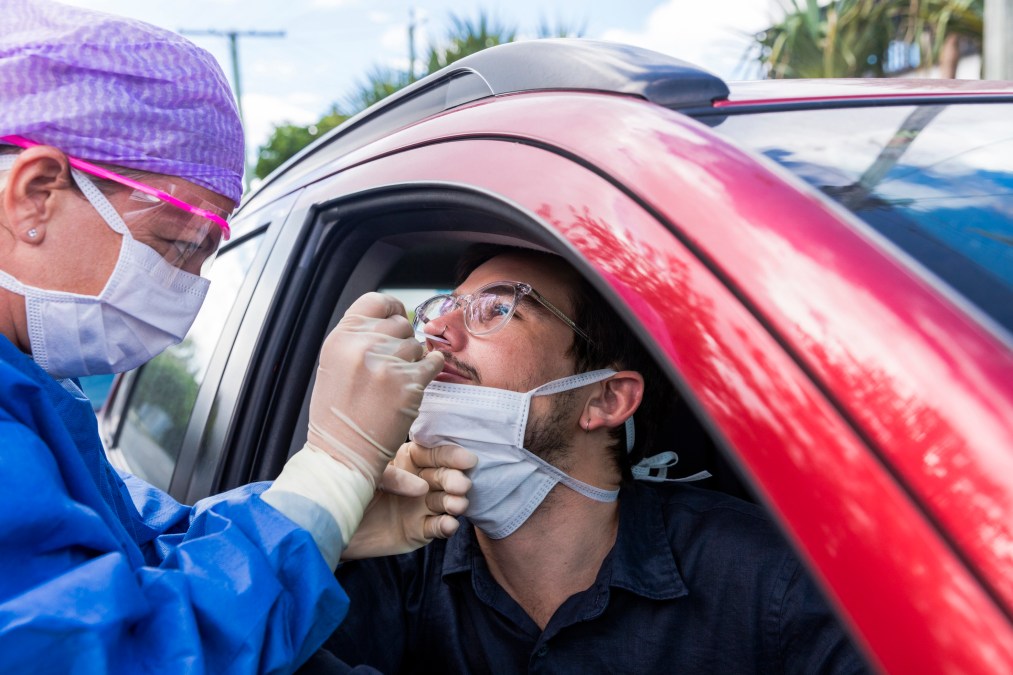New York State shares lessons from COVID-19 tech ‘SWAT teams’

Since COVID-19 started burning across New York, the state’s Office of Information Technology Services has scrambled to provide the IT infrastructure and logistics to support the rapid responses of other agencies.
One of the measures ITS took early in the pandemic was to make an open call to private-sector technologists who might be able to lend their skills to the state’s needs, including apps to help people screen themselves for a coronavirus infection, expanding processing capacity for state services like unemployment and distributing network hardware to support field operations.
The state has since fielded thousands of offers for support for the “COVID-19 Technology SWAT Teams,” as the projects have been called, ITS officials said this week. According to the agency, the state has received nearly 4,700 offers of help — representing about 6,500 IT professionals — on product management, software development and engineering, hardware deployment, end-user support, design and data science since Gov. Andrew Cuomo announced the program March 25.
Not every offer could be accepted, though.
“With the sheer number of volunteers, we couldn’t take 6,500 people, said Scott Reif, ITS’ communications director. “We put a premium on teams versus just an individual. It made for easier more effective collaboration.”
Many of those teams came from major technology companies, including Apple and Microsoft, which worked with ITS to develop self-screening tools to allow New Yorkers to determine if they should make an appointment for either a diagnostic swab test for COVID-19 or a blood test to determine if they are already carrying the disease’s antibodies. Since those tools were launched April 16, more than 536,000 people have used Microsoft’s screener to determine if they should get a swab test — with about 210,000 tests scheduled — while 23,000 people have used it to get an antibody test, ITS said.
The volunteers have been working — virtually — alongside ITS employees, Reif said.
Since April 16, the state has launched efforts with other major tech vendors. Unisys has contributed additional servers to help New York agencies boost their processing capacity to deliver critical services, especially safety-net programs like unemployment. (Reif said a revamped unemployment benefits website the state launched in early April was done under an existing contract between Google and the state Labor Department.)
ITS said it also worked with a team from LinkedIn to recruit additional health care workers to relieve overwhelmed hospitals, and received network access points and other hardware from Cisco to keep hospitals and field operations connected.
The agency this week also published a brief “playbook” meant to be a guide for other government entities that find themselves scrambling for emergency IT services. The guiding principle of the “SWAT Team” approach, the guide reads, is to “prioritize lessening the burden on the front lines over everything else.”
It goes on to recommend several best practices ITS identified during its experience, including the use of agile development to deliver projects on “extremely aggressive” timelines, vetting offers of support for both cybersecurity and legal risks and maintaining constant communication between private-sector team leaders and agency leaders.
While the playbook was developed in the middle of a public health crisis that sickened nearly 375,000 New Yorkers and killed more than 24,000, ITS said the “SWAT” approach is applicable to other emergencies.
“It’s envisioned for any government entity that needs to surge resources to support the work they’re doing,” Reif said. “The public-private partnership model is something that others can take and utilize in instances where you do need a rapid surge of resources.”






